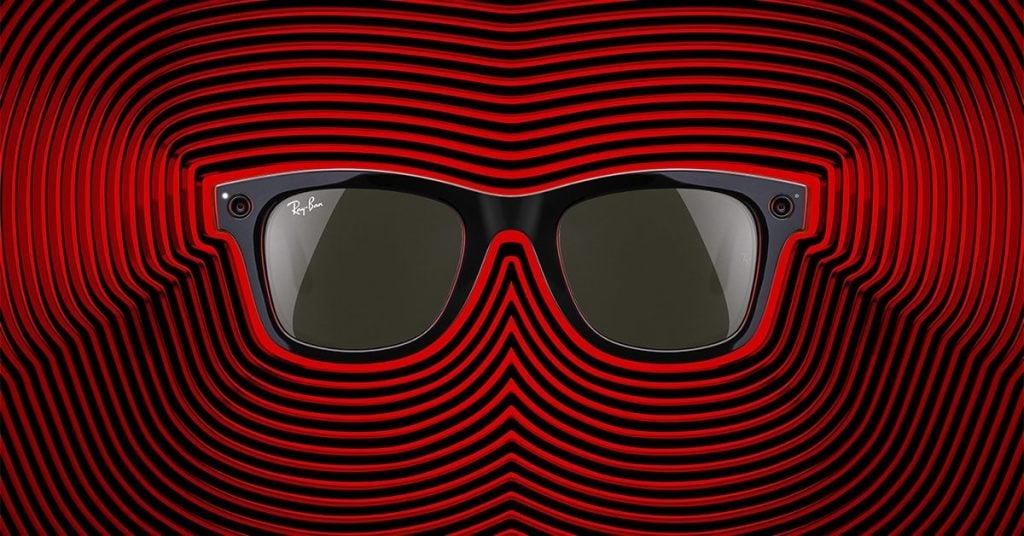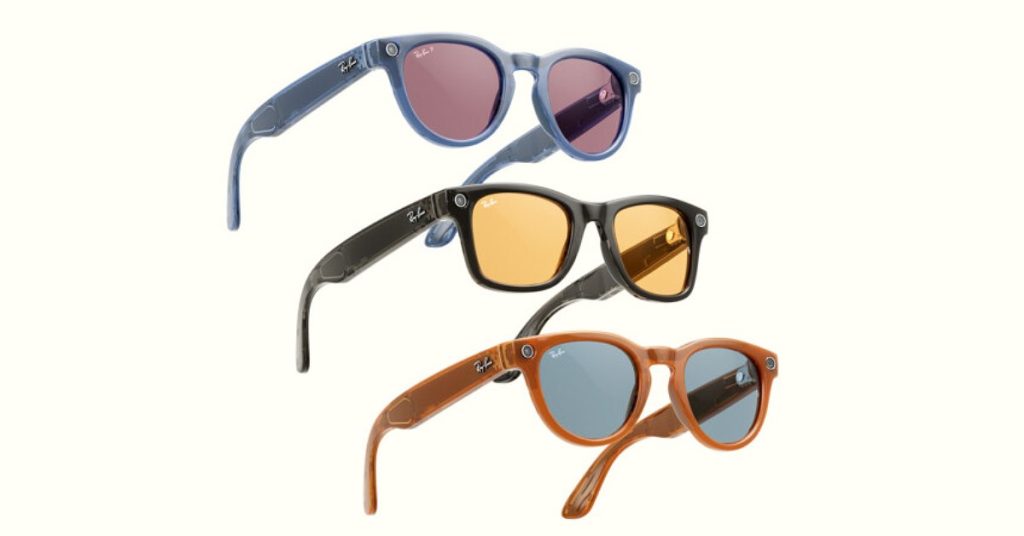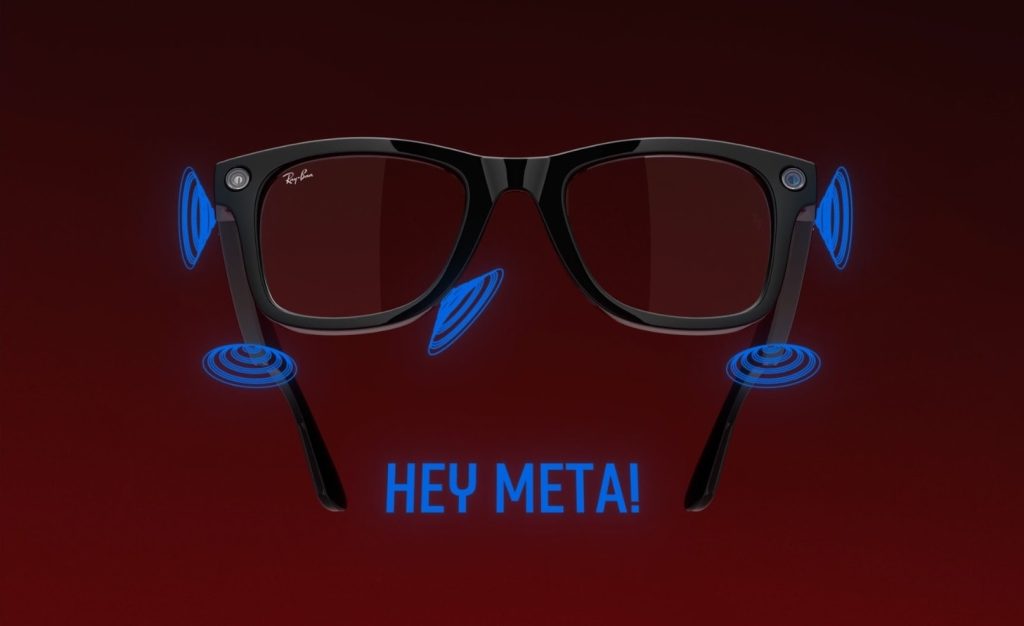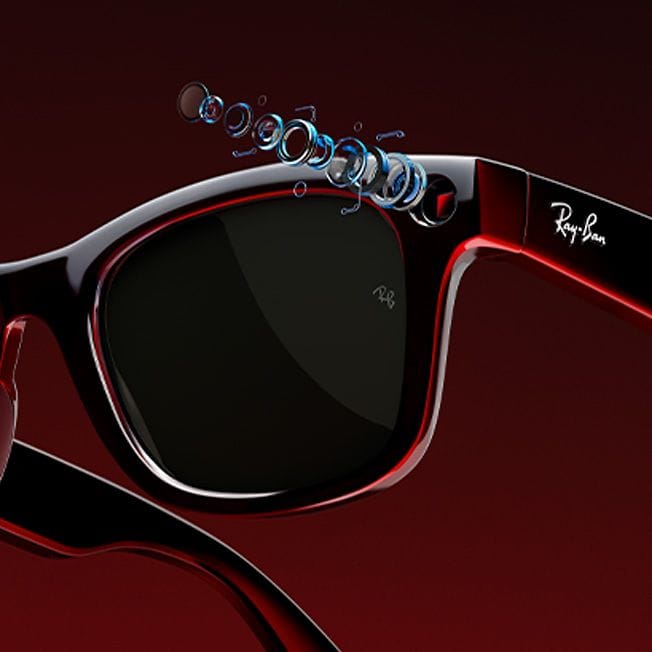Once considered the stuff of science fiction, smart glasses are rapidly emerging as the next big wave in wearable technology. From their initial prototypes to the sophisticated devices we see today, smart glasses have undergone a monumental evolution.
In recent times, numerous brands have entered the smart glasses market, unveiling products with remarkable features. Meta has introduced its second-generation Ray-Ban Smart Glasses, and Huawei has launched the Eyewear 2 series, both offering impressive specifications and functionality.
Let’s explore the evolution of smart glasses over the years and the driving forces behind their advancements.

New Smart Glasses are better in Style and Comfort
The initial generation of smart glasses, while groundbreaking, often lacked in terms of aesthetics. Early designs like Google Glass stood out with their noticeable tech components, making wearers noticeable in a crowd, but not always in a positive way. These bulky and sometimes awkward designs were far from universally appealing, often resembling lab equipment more than fashionable eyewear.
However, in recent years, there has been a significant transformation in the design of smart glasses. Companies have recognized the importance of blending functionality with style for wearables to gain widespread acceptance. Modern smart glasses feature sleeker and more discreet designs that closely resemble traditional eyewear.

For example, Ray-Ban partnered with Meta (formerly Facebook) to create smart glasses that seamlessly integrate advanced technology while preserving the classic Ray-Ban style. These glasses can capture photos, record videos, and even handle phone calls while looking like stylish sunglasses.
Huawei has also entered the smart glasses market with its Huawei Eyewear 2, combining a minimalist aesthetic with integrated speakers and microphones seamlessly built into the frame, offering an ergonomic design with no visible tech components.

Bose, renowned for its audio equipment, surprised many with Bose Frames, which incorporate audio features into subtly designed frames suitable for a trendy cafe or a business meeting.
Brings New Features & Integration
As technology advances, smart glasses have expanded their functionality beyond merely mirroring smartphone notifications. They now aim to provide unique, hands-free experiences that can complement or even outperform other devices.
Navigation and Travel: Modern smart glasses like North Focals offer in-sight navigation directions, freeing users from constantly checking their smartphones. Some even provide augmented reality directions with digital markers in the real world.
Communication: Smart glasses, such as Snap’s Spectacles, enable immersive first-person capture and sharing of moments. Many models feature built-in microphones and speakers for hands-free calls and voice commands.
Entertainment and Media: Bose Frames, for example, let users enjoy music without earbuds by using directional speakers. Glasses like Nreal Light offer rich media experiences by overlaying videos or games in the user’s environment. Meta’s Rayban Smart Glasses support live streaming.

Live Translations: Integrating Google’s AR-based platform with smart glasses facilitates real-time translations of foreign signboards or menus, a valuable feature for travelers.
Health and Fitness: Vuzix Blade smart glasses display fitness metrics, providing real-time updates on speed, heart rate, and distance traveled during activities like running or cycling.
Integration with Home Systems: Smart glasses can control smart home systems through voice commands, connecting with platforms like Amazon Alexa or Google Assistant to adjust thermostats, lights, or security cameras.
Educational and Professional: Professions requiring hands-free access to information, such as medicine or mechanics, benefit from smart glasses that overlay necessary data or instructional videos. Epson’s Moverio line, for instance, has applications in museums and medical schools.
The growing availability of apps and software tailored for smart glasses further extends their potential. As developers become more familiar with these platforms, the distinction between smartphone capabilities and smart glasses experiences is likely to blur, potentially offering a parallel or even superior digital experience.
Adds New Augmented Reality (AR) Experiences
The combination of Augmented Reality (AR) and Artificial Intelligence (AI) in smart glasses is revolutionizing how we perceive and interact with our environment. AI enhances contextual awareness, enabling smart glasses to recognize and provide relevant information about the surroundings.

This includes personalized recommendations, real-time transcription for the hearing impaired, and obstacle warnings. Regarding AI, Meta’s new Ray-Ban Meta smart glasses are equipped with Meta AI, enabling features like photo and video capture, hands-free control through voice commands, and the potential for real-time information display.
Longer Battery Life and Better Power Efficiency
The evolution of battery technology in smart glasses has brought about significant improvements in terms of enhanced battery life and power efficiency. Key advancements include:
Battery Technology: Lithium-polymer and lithium-ion batteries have seen improvements in energy density, allowing them to store more power without increasing in size.
Optimized Chipsets: Wearable-specific microprocessors, like Qualcomm’s Snapdragon XR1 and Snapdragon AR1 Platform, provide high performance while minimizing power consumption.

Software Optimization: Smart glasses now come with optimized operating systems and apps that use resources efficiently, reducing background processes that drain the battery.
Solar Integration: Some smart glasses incorporate solar cells on the frames, providing supplementary power from ambient light during daylight hours.
Fast Charging: Many modern smart glasses support fast-charging technologies, ensuring users can quickly recharge and enjoy extended usage after just a few minutes of charging.
Brands like Bose, Ray-Ban (in partnership with Meta), and Huawei offer smart glasses with impressive battery life, thanks to these advancements. For example, recent Ray-Ban releases provide all-day battery life with rapid charging features. As technology continues to progress, users can expect smart glasses that are both high-performing and energy-efficient, without compromising on functionality.
Better Data Privacy and Security Measures

As smart glasses integrate cameras and recording devices, data privacy and security have become critical concerns. Brands are actively implementing strong security measures such as encryption, user authentication, and strict data-sharing protocols to protect against unauthorized access and potential data breaches, prioritizing user privacy.
Increased Affordability and Market Accessibility
Smart glasses, once a niche for tech enthusiasts, are becoming more accessible to the public. This shift is driven by economies of scale, increased competition, and technological advancements. Production at larger scales lowers manufacturing costs, while a growing number of companies entering the market promote competitive pricing. Innovations in component production, display technology, and materials contribute to cost reduction. Smart glasses are now available through various distribution channels, including optical shops and online platforms. Overall, smart glasses are poised to become widely affordable and commonplace.
Conclusion
Smart glasses continue to advance steadily, benefiting from ongoing technological developments and innovations. The integration of smart features is improving their functionality over time. Furthermore, the emergence of AR devices is enhancing the overall ecosystem, with increasing software support.
As AR/VR headsets evolve, they create a foundation for the continuous improvement of smart glasses. The growing user base and the expanding use of Augmented Reality suggest a gradual shift toward the adoption of smart glasses in the future. The future appears promising, with substantial progress already underway towards an innovative and bright future.







